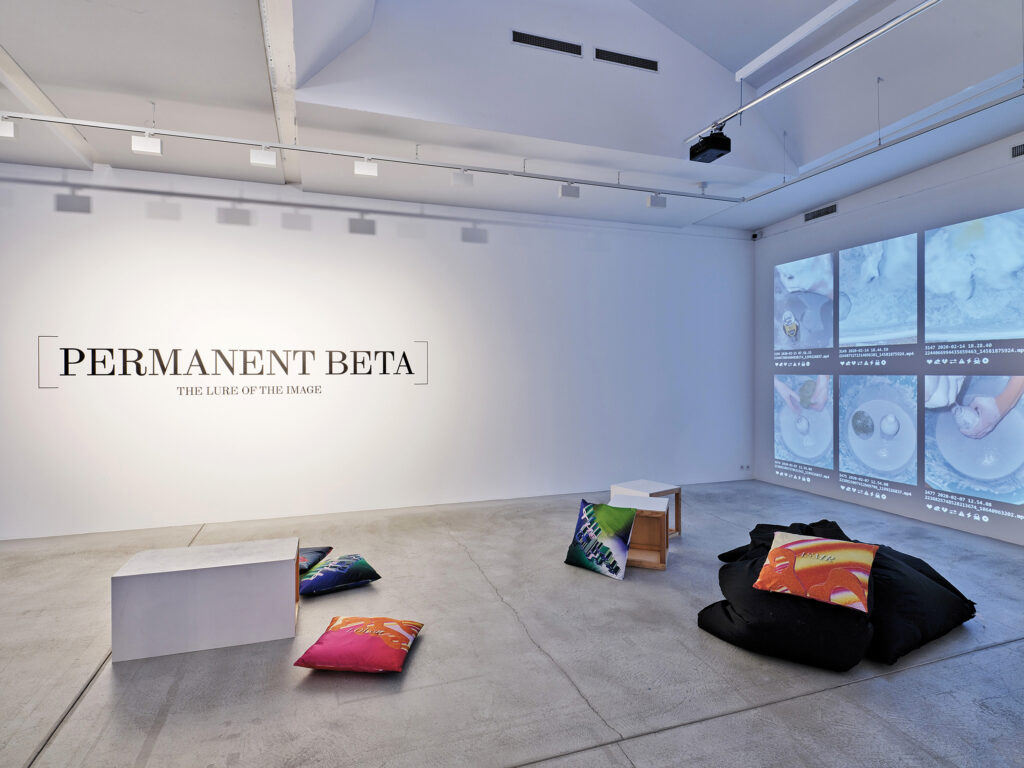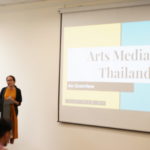PA 61 (Destroyed)
2018 - Film & Video (Film & Video)
10:58 minutes
Alex Lukas
Three hours west of New York City is the town of Centralia, Pennsylvania. The story of this eastern ghost town’s demise has become legend: in 1962 burning trash ignited a vein of anthracite coal, starting an underground fire that continues to burn today, forcing the town’s depopulation. Centralia has since become a pilgrimage site; or rather a mile-long stretch of state route 61 outside of the town that sits abandoned, its surface buckled and cracked by the underground fire. It’s become known as the “Graffiti Highway,” and Google Maps lists it as “PA 61 (Destroyed).” Today the road is covered in color. Crudely written names, short messages, untrained drawings, declarations of love, vulgarities, and even twitter handles populate the damaged blacktop. This propagation of color sprayed on the surface has begun to extend past the road’s edge and onto the nearby maple saplings and sumac bushes. According to the artist Alex Lukas “it’s tempting to imagine these trees sprouting from the underground conflagration and blossoming in new and mutated ways… as if appearing in a science-fiction landscape.” The video PA 61 (Destroyed) by Alex Lukas combines fixed-camera shots filmed on the site by the artist, with excerpts sourced from YouTube, allowing the folkloric collage to tell the complex story of the site—blending sci-fi imagery, facts about the site’s history, and amateur documentation.
Alex Lukas’s practice is much akin to that of the researcher, historian or collector of folklore, exploring exceptional sites in the American landscape. However, unlike most historians, he doesn’t suppress the fictional narratives associated with a site. Instead these serve as markers for the presence of a cultural imaginary through constructed narratives about the past, and serve as points of fascination that shape the outcomes of his research. These often take the form of a constellation of aesthetic and informative objects related to a particular location’s layered uses, memory, and identity.
Colors:
Related works sharing similar palette
» see more

© » KADIST
Tony Cokes
2022Tony Cokes’s long-form, multi-channel work Some Munich Moments 1937–1972 forms a layered montage of historical and contemporary source material exploring different periods of Munich’s history...

© » ARTS EQUATOR
The top ArtsEquator articles of 2020 | ArtsEquator Thinking and Talking about Arts and Culture in Southeast Asia Articles NEON December 31, 2020 Below is a list of the top 10 ArtsEquator articles in 2020, in random order: An Elder Millennial’s Guide to Classic Singapore TV & Movies by Joel Tan Published on: 20 Aug 2020 “Purists are undecided on when exactly Singapore TV died, but I think 2007, when Phua Chu Kang wrapped, and 2015, when Tanglin started, might be a good gauge...

© » 1854 PHOTOGRAPHY
Code switching: How Fotomsuseum Winterthur became digital-first - 1854 Photography Subscribe latest Agenda Bookshelf Projects Industry Insights magazine Explore ANY ANSWERS FINE ART IN THE STUDIO PARENTHOOD ART & ACTIVISM FOR THE RECORD LANDSCAPE PICTURE THIS CREATIVE BRIEF GENDER & SEXUALITY MIXED MEDIA POWER & EMPOWERMENT DOCUMENTARY HOME & BELONGING ON LOCATION PORTRAITURE DECADE OF CHANGE HUMANITY & TECHNOLOGY OPINION THEN & NOW Explore Stories latest agenda bookshelf projects theme in focus industry insights magazine ANY ANSWERS FINE ART IN THE STUDIO PARENTHOOD ART & ACTIVISM FOR THE RECORD LANDSCAPE PICTURE THIS CREATIVE BRIEF GENDER & SEXUALITY MIXED MEDIA POWER & EMPOWERMENT DOCUMENTARY HOME & BELONGING ON LOCATION PORTRAITURE DECADE OF CHANGE HUMANITY & TECHNOLOGY OPINION THEN & NOW With the physical space closed for renovation, Fotomuseum Winterthur’s digital curator reveals how ASMR livestreams and ‘sludge content’ are keeping online momentum high Marco De Mutiis, digital curator at Fotomuseum Winterthur, wants the photography world to “stop whining”...
Related works found in the same semantic group
» see more

© » KADIST
Juan Carlos Alom
2012In Amantes (Lovers) Juan Carlos points his lens at his own environment, his underground (literally) studio in Havana...

© » ARTS EQUATOR
Podcast 61: The Media Landscape in Thailand | ArtsEquator Thinking and Talking about Arts and Culture in Southeast Asia Articles Asian Arts Media Roundtable July 11, 2019 Duration: 20 min In our latest podcast, Thai theatre critic Amitha Amranand gives a comprehensive overview of the media landscape in Thailand, discussing the impact of the political and legal system on the arts and the paradoxical freedom that arts journalists have in the country...



